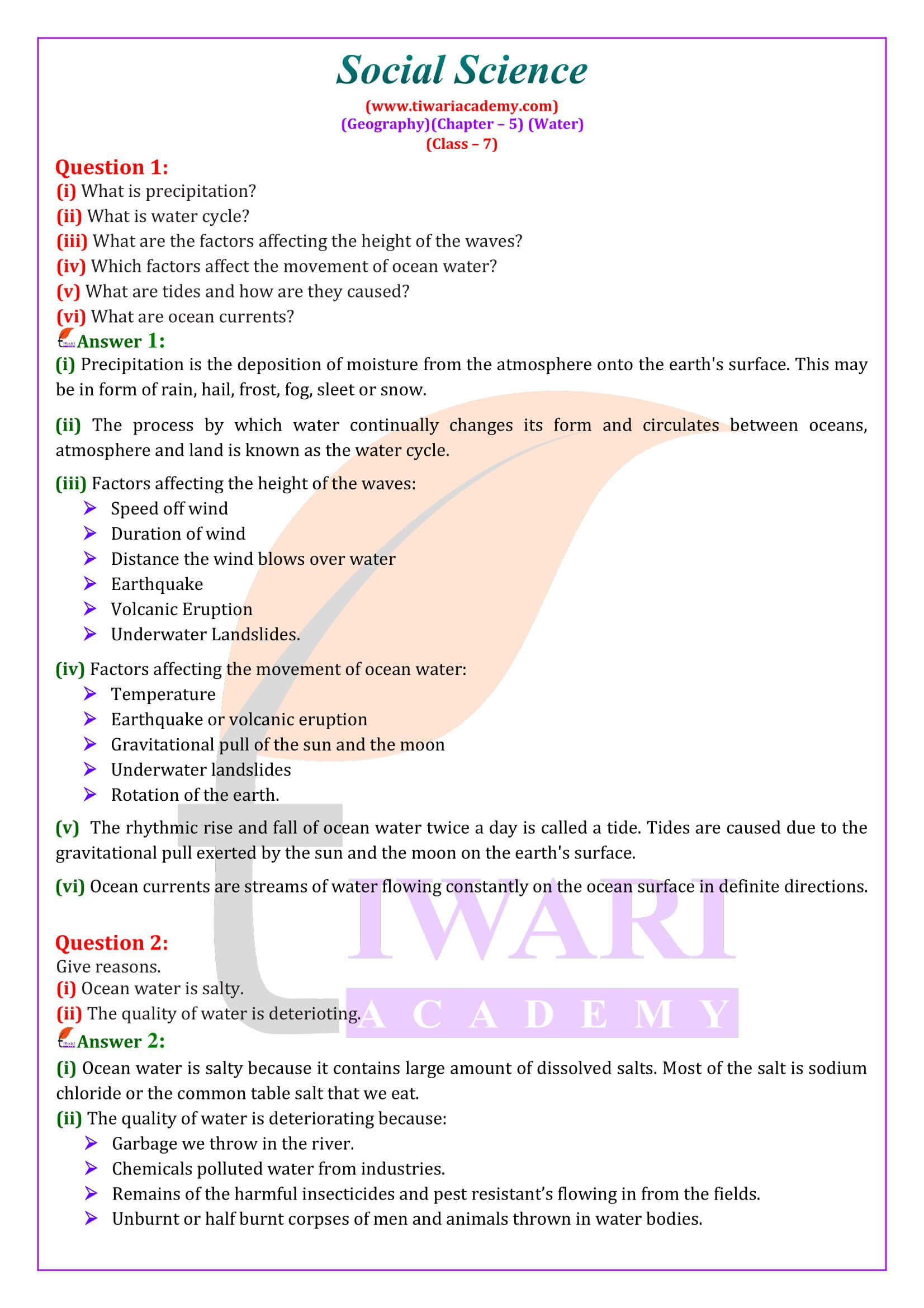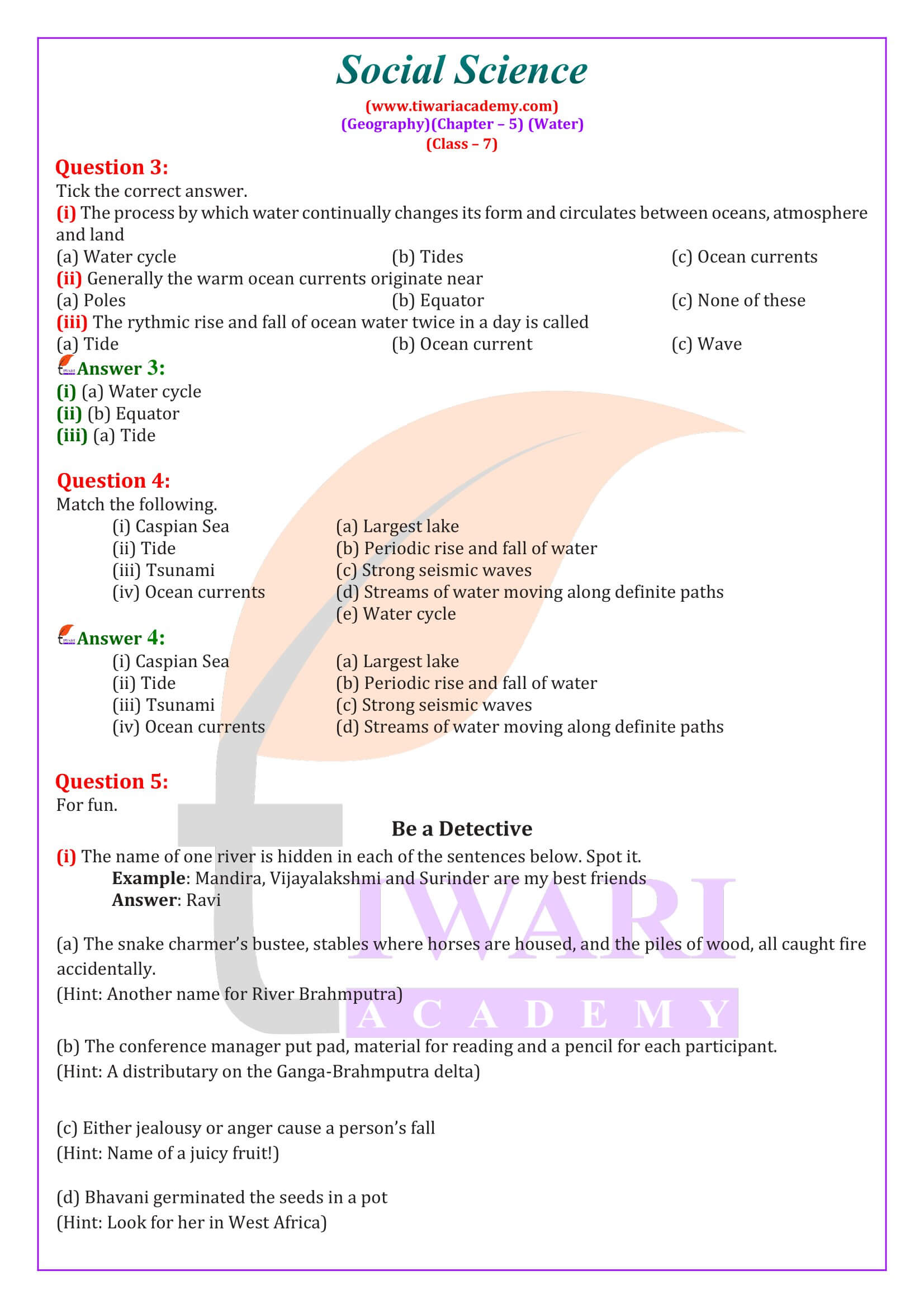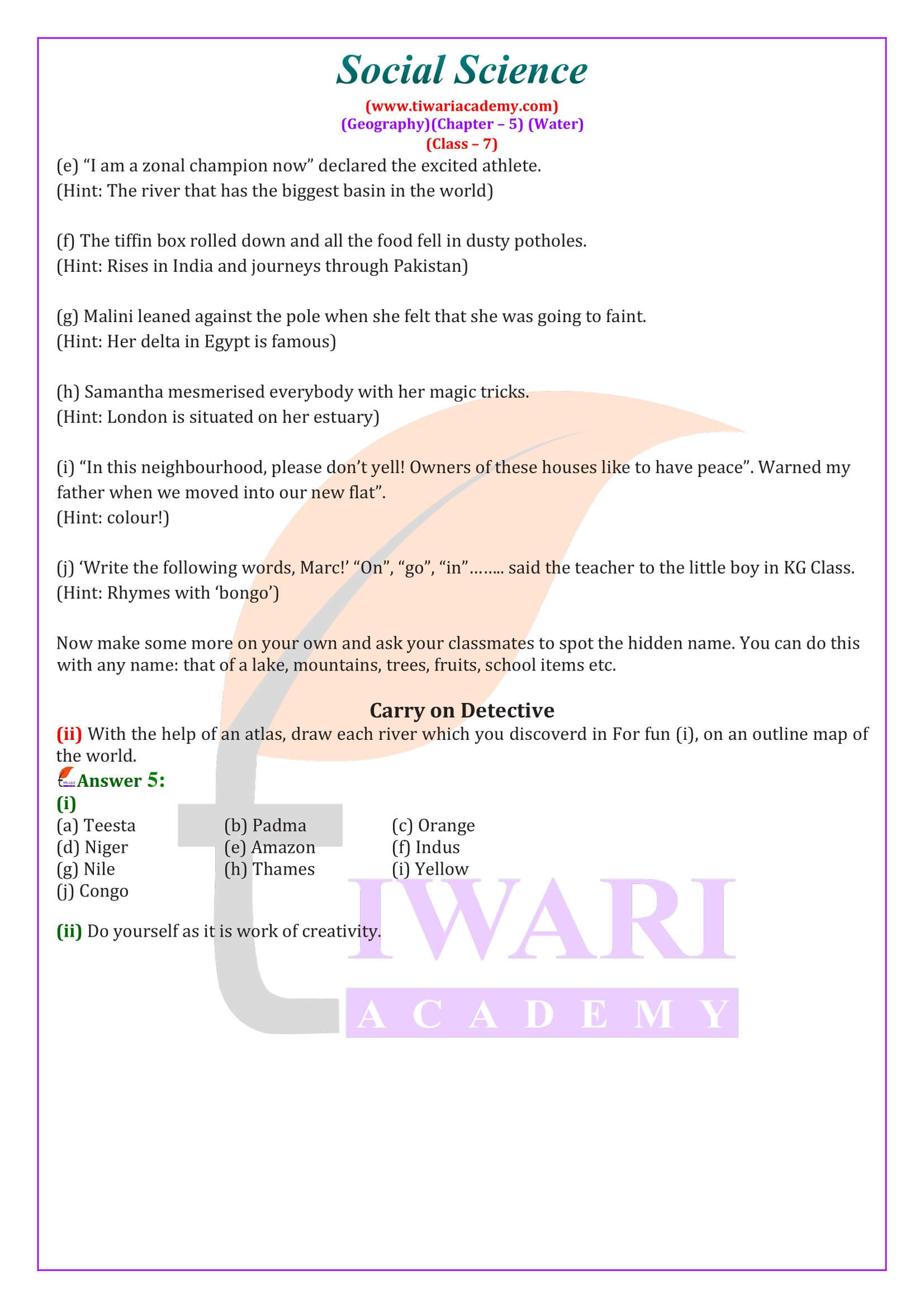NCERT Solutions for Class 7 Social Science Geography Chapter 5 Water in English Medium and Hindi Medium to View online or download in PDF file format for session 2024-25 updated according to latest NCERT Books for all students. Updated NCERT Books Solutions are based on latest NCERT Books for the academic session 2024-25.
NCERT Solutions for Class 7 Social Science Geography Chapter 5
Class 7th Geography Chapter 5 Solution in Hindi and English Medium
| Class: 7 | Geography |
| Subject: | Social Science |
| Chapter 5: | Water |
| Medium: | English and Hindi Medium |
| Academic Session: | 2024-25 |
Class 7 Geography Chapter 5 Explanation
Frequently Asked Questions on 7th Geography Chapter 5
Class 7 Geography Chapter 5 Extra Questions
What are the major sources of fresh water?
The major sources of fresh water are the rivers, ponds, springs and glaciers. The ocean bodies and the seas contain salty water.
What are waves?
When the water on the surface of the ocean rises and falls alternately, they are called waves. During a storm, the winds blowing at very high speed form huge waves. These may cause tremendous destruction.
What do you mean by tsunami? Give examples?
An earthquake, a volcanic eruption or underwater landslides can shift large amounts of ocean water. As a result, a huge tidal wave called tsunami, that may be as high as 15m., is formed. The largest tsunami ever measured was 150m. high. These waves travel at a speed of more than 700 km. per hour. The tsunami of 2004 caused wide spread damage in the coastal areas of India. The Indira point in the Andaman and Nicobar Islands got submerged after the tsunami.
What are tides?
The rhythmic rise and fall of ocean water twice in a day is called a tide. It is high tide when water covers much of the shore by rising to its highest level. It is low tide when water falls to its lowest level and recedes from the shore.
What are spring tides?
The strong gravitational pull exerted by the sun and the moon on the earth’s surface causes the tides. The water of the earth closer to the moon gets pulled under the influence of the moon’s gravitational force and causes high tide. During the full moon and new moon days, the sun, the moon and the earth are in the same line and the tides are highest. These tides are called spring tides.
What are neap tides?
When the moon is in its first and last quarter, the ocean waters get drawn in diagonally opposite directions by the gravitational pull of sun and moon resulting in low tides. These tides are called neap tides.
What are ocean currents?
Ocean currents are streams of water flowing constantly on the ocean surface in definite directions. The ocean currents may be warm or cold. Generally, the warm ocean currents originate near the equator and move towards the poles. The cold currents carry water from polar or higher latitudes to tropical or lower latitudes.
Class 7 Social Science – Geography Chapter 5 – Important Questions
What is precipitation?
Precipitation is the deposition of moisture from the atmosphere onto the earth’s surface. This may be in form of rain, hail, frost, fog, sleet or snow.
What is water cycle?
The process by which water continually changes its form and circulates between oceans, atmosphere and land is known as the water cycle.
What are the factors affecting the height of the waves?
Factors affecting the height of the waves: Speed off wind Duration of wind Distance the wind blows over water Earthquake Volcanic Eruption Underwater Landslides.
Which factors affect the movement of ocean water?
Factors affecting the movement of ocean water: Temperature Earthquake or volcanic eruption Gravitational pull of the sun and the moon Underwater landslides Rotation of the earth.
What are tides and how are they caused?
The rhythmic rise and fall of ocean water twice a day is called a tide. Tides are caused due to the gravitational pull exerted by the sun and the moon on the earth’s surface.
What are ocean currents?
Ocean currents are streams of water flowing constantly on the ocean surface in definite directions.
Why is Ocean water salty?
Ocean water is salty because it contains large amount of dissolved salts. Most of the salt is sodium chloride or the common table salt that we eat.
The quality of water is deterioting. Why? Give reasons.
The quality of water is deteriorating because: Garbage we throw in the river. Chemicals polluted water from industries. Remains of the harmful insecticides and pest resistant’s flowing in from the fields. Unburnt or half burnt corpses of men and animals thrown in water bodies.
NCERT Solutions for Class 7 Social Science Geography Chapter 5 Water.
Download NCERT Solutions for Class 7 Social Science Geography Chapter 5 Water in PDF format free to use. You can read it without downloading, just by choosing STUDY ONLINE option. Class 7 Geography Chapter 5 all answers are given on this page. Only those questions are left, which are activity and should be done by students only.
Class 7 Geography Chapter 5 Question Answers
CBSE NCERT Solutions for Class 7 Social Science Geography Chapter 5 Water is given here in updated format for session 2024-25. Ask your doubts and share your views with others in Discussion Forum. You can ask any questions related to Education or Education contents. Download these solutions for offline use or use as it is without downloading online.







